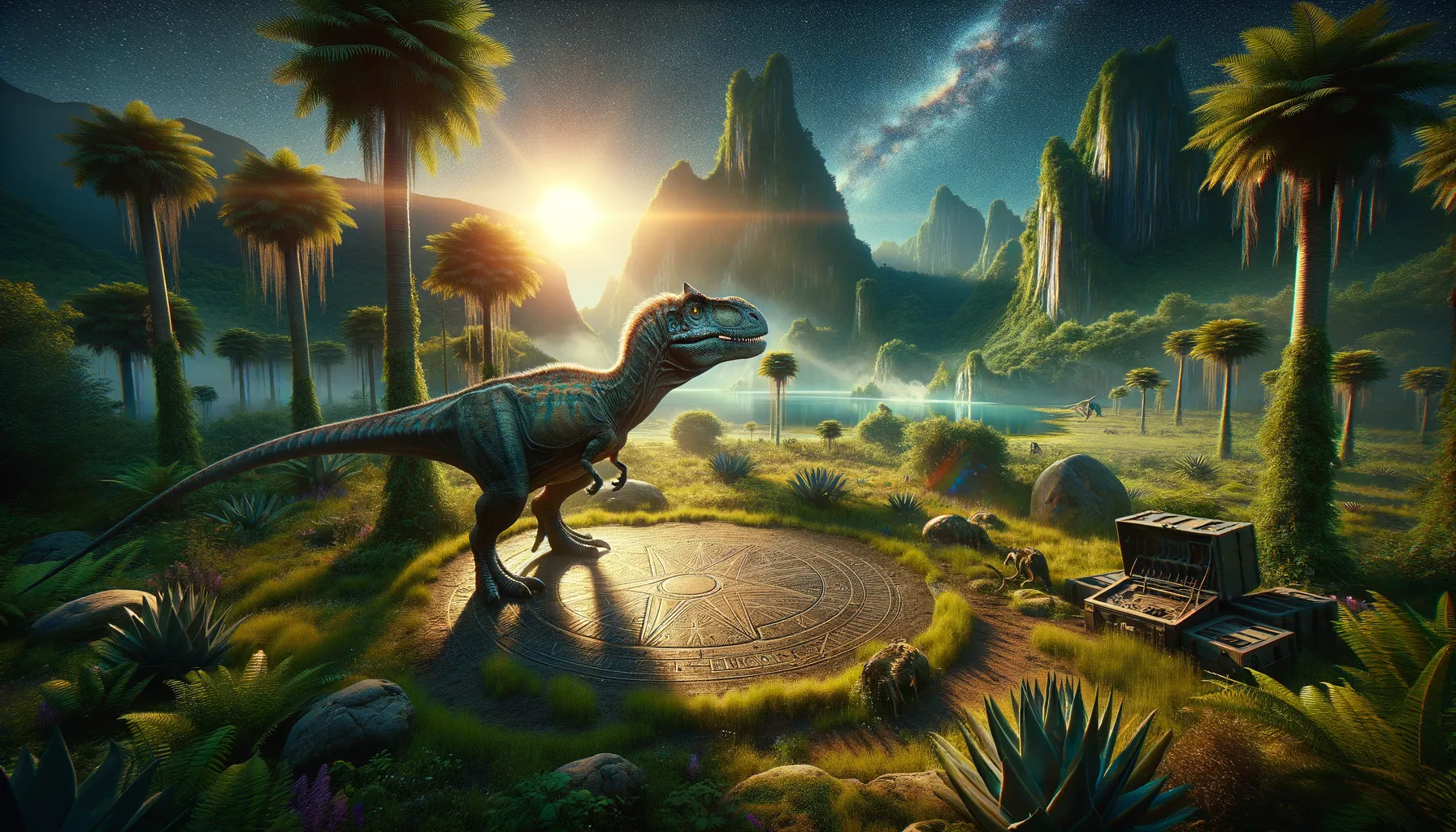
Vectisaurus
Past's speedy marvel, nature's balanced force!
Period
Cretaceous
Length
Measured around 5 meters from head to tail.
Height
Stood about 1.5 meters tall at the hips.
Weight
Weighed approximately 500 to 700 kilograms.
Vectisaurus was a dinosaur that roamed the earth during the Cretaceous period. With its moderate size, it found a niche in its environment that balanced both speed and strength. Its well-preserved fossils have provided a wealth of information, helping paleontologists understand more about dinosaur locomotion and behavior. The Isle of Wight's fossil-rich grounds were key to revealing unique aspects of this dinosaur's life.
Diet
Vectisaurus was herbivorous, primarily feeding on ferns, cycads, and other gymnosperms. Its teeth were adapted for grinding tough plant material.
Hunting
As an herbivore, Vectisaurus did not engage in hunting. Instead, it foraged, using its sensory skills to locate food.
Environmental challenges
Vectisaurus faced challenges such as changing climates and competing amidst a variety of flora and fauna. Predation was an ever-present risk, requiring constant vigilance and strategic living. Its environment also demanded adaptation to seasonal plant availability and resource distribution.
Speed
Vectisaurus had a moderate running speed, suited for short bursts.
Lifespan
Estimated to have lived around 20-30 years.
First discovery
Discovered in the early 20th century on the Isle of Wight.
Fun Facts
- Vectisaurus is a genus of dinosaur known from the Isle of Wight in England, where some of its fossil remains were discovered.
- This dinosaur lived during the Early Cretaceous period, roughly 125 million years ago.
- Vectisaurus was likely a plant-eater, or herbivore, based on its physical traits and the environment it inhabited.
- While not the biggest dinosaur, Vectisaurus was medium-sized, providing a good example of the diversity of dinosaurs in its time.
- The name 'Vectisaurus' means 'Isle of Wight lizard,' highlighting the location where its fossils were initially found.
- There is still some mystery surrounding Vectisaurus because not many fossils have been discovered, making it an exciting topic for ongoing research.
- Paleontologists continue to study Vectisaurus to better understand its habits, diet, and role in the ecosystem.
Growth and Development
Vectisaurus likely underwent rapid growth in its juvenile stages, slowing down once it reached maturity. It developed a sturdy frame early on to aid in its mobility and foraging capabilities. Growth patterns suggest that social factors and food availability played significant roles in their development.
Habitat
Its habitat included lush forests and open plains, allowing for diverse foraging opportunities. The area was rich in plant life, supporting large herbivores like Vectisaurus. Seasonal changes required adaptability in seeking new food sources as environments shifted.
Interaction with other species
Vectisaurus interacted with a variety of species within its ecosystem. As a herbivore, it likely moved in groups to defend against predators. It played a role in the food chain, influencing plant distribution through its feeding behavior.
Natural lifespan
Vectisaurus likely lived up to three decades in the wild.
Reproduction
Reproductive behavior likely involved nesting and laying eggs in secure, hidden areas. Displays and vocalizations may have been used to attract mates. Parental care might have been present, ensuring offspring survival in their vulnerable early stages.
Social behaviour
Vectisaurus might have exhibited social behaviors like group foraging or migration. It relied on group dynamics for protection against predators. Communication within groups was essential for maintaining social order and coordinating movements.
Fossil locations
Fossils of Vectisaurus have been primarily found on the Isle of Wight. These locations have provided a wealth of information due to their well-preserved state. The isle's geology offered a prime window into the life and environment of Cretaceous-era dinosaurs.
